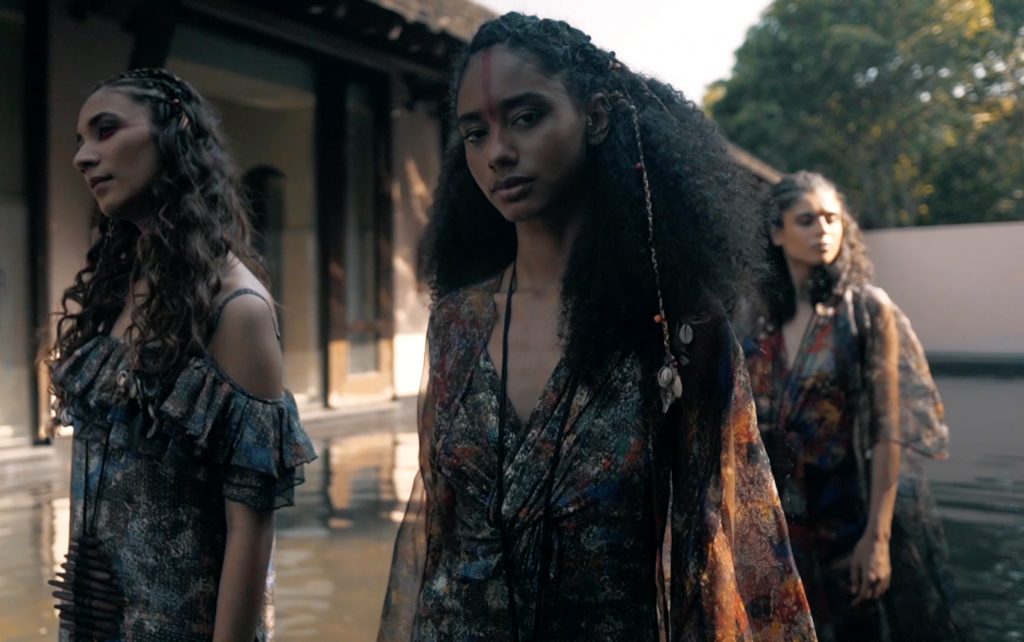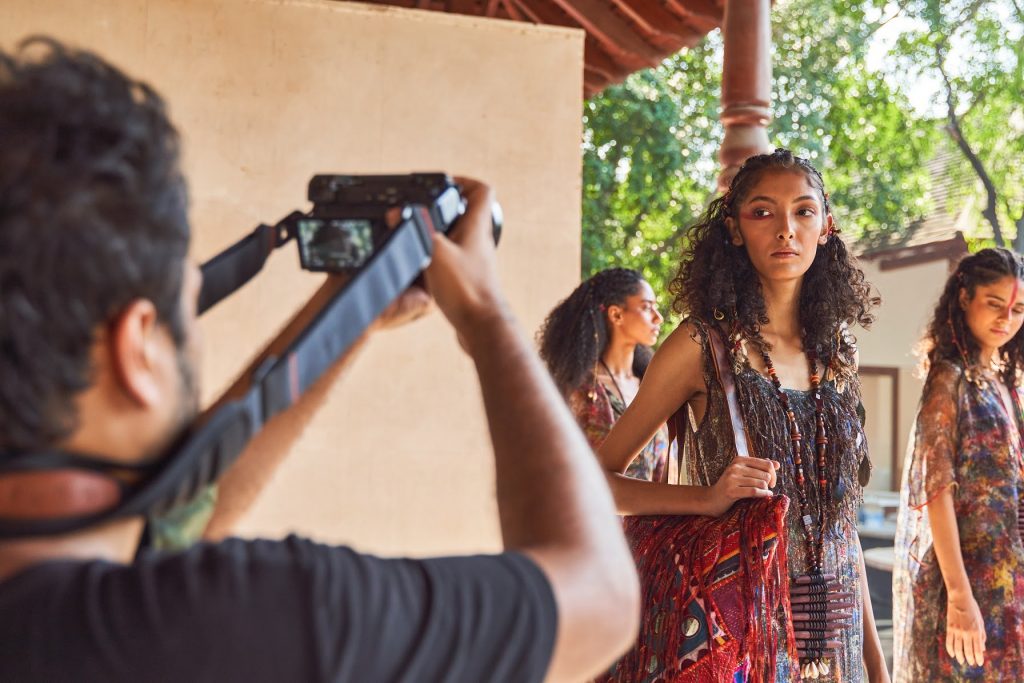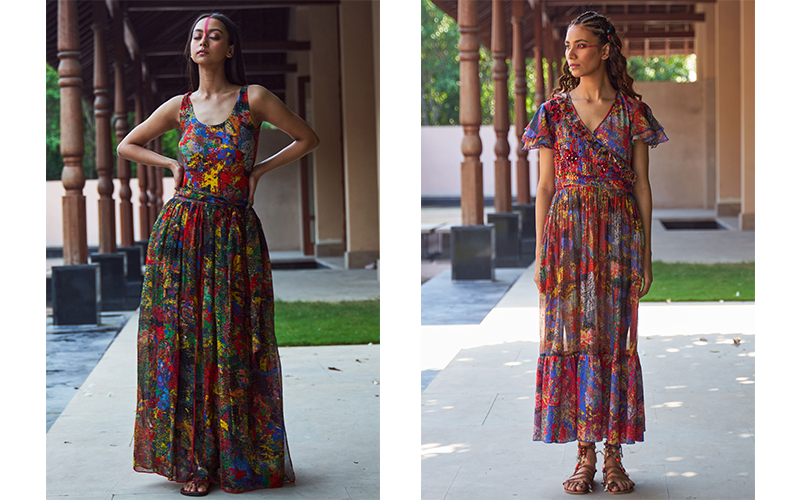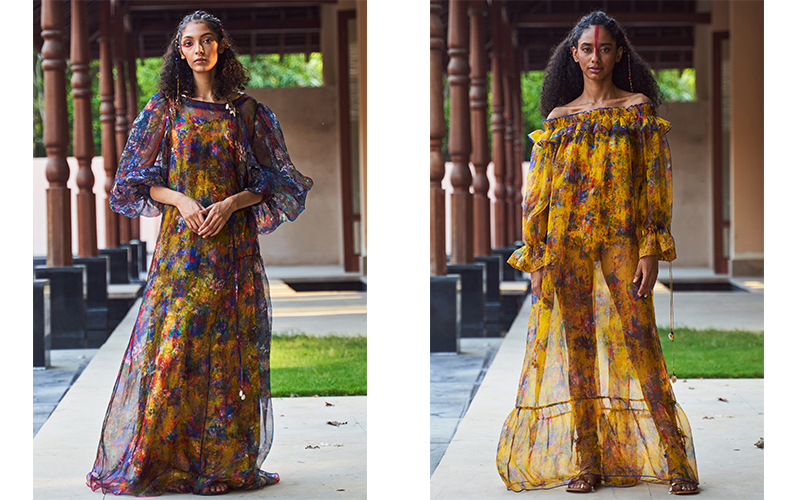Payal Jain looks within the layers of consciousness to debate the meaning of life, as the Holy Grail is truly inner calm
By Asmita Aggarwal
The Holy Script is Payal Jains personal journey over the past months, looking inwards, introspecting and accepting lifes challenges and appreciating its gifts and beauty, by trying to reinvent thoughts, actions and way of living. I think this time to Pause has been a blessing, an opportunity to look inwards and dive into silence that lies within, to become cognizant of the futility of tasks and actions that keep us constantly busy, the realisation of missing out on little joys, the deep yearning for silence, peace and positivity. I truly feel, the need to nurture each precious moment I am blessed to have, who knows how many breaths remain, she affirms.
The unmindful abuse of natural resources and animal kingdom left a deep impact on her mentally, and she has taken the past few months as an opportunity to enforce her personal crusade, in the hope of preserving whatever she possibly can through her actions and by spreading awareness and knowledge about a healthy, natural and sustainable way of living. It feels like a daunting task, but each of us has to feel this pain deeply and personally for change to begin, if we dont feel it now, then when? she asks.

Having always being partial to natural and organic fabrics, mostly woven in remote clusters across India, but she has never spoken much about this aspect of her work, today she decided to do just that. It is time as a responsible citizen of the planet to speak, act and spread awareness about the damage that is being done to our beloved Mother Earth. The last decade has been brutal for our environment; with mindless construction, cutting forests, polluting water bodies, animals being butchered, consumerism and race for economic superiority. It is imperative to bring change, and possibly the only way to sustain and survive, to place the needs of our planet before our need and greed. Each of us must become mindful of what we buy, how much we use and discard, and how much of it collects in a landfill, she explains.
As a designer, she strongly feels, one needs to promote local, indigenous crafts and textiles, which provide livelihood to the vast community of weavers, artisans and crafts persons. Today, when our existence is in question, we must come together as a fraternity, with a collective intention and commitment. We can make changes in our production facilities, reduce wastage of water, conserve power and try alternate sources of energy, recycle and up-cycle our products, ban use of plastic, stop wastage of paper, create safe and hygienic working environments, and focus on health and sanitation for our work force, she adds.
The design community can contribute greatly by promoting and using natural yarns and dyes, environmentally-friendly production and post-production processes, recycling and reusing scrap coming out of factories and generally being sensitive to what we put out into the environment. The film is the story of my personal growth and spiritual journey of awareness, to seek answers for my constant quest of Who, Why and What! I constantly seek these answers, to know who I am, why I am here and what message I am meant to communicate through this journey, but they remain nebulous and distant, she says.

Fashion and textile are mediums she is blessed to have access to, but the message she conveys through her work permeate beyond one space or medium, a constant quest for answers. For any creative person, everything becomes a medium of expression, be it a canvas or a loom, an instrument, a wall, a piece of textile, a mound of clay or roll of paper. One flows seamlessly into another, inspiration spilling into everything, be it art, music, film or poetry, she says.
Payal enjoys the medium of a film and the Phygital LMIFW format gave her the freedom to explore this further. She believes every medium allows expression in its own unique way, and she enjoyed putting the ethos behind Holy Script into a video format. It has been a great learning experience and big change from the fittings, backstage, ramp, sets, sound, lights, choreography madness and comes with its own set of challenges, but thats what I feel is reinvention, and imperative in the fashion world. This has come as an opportunity to push our boundaries and Recreate, Rethink and Reinvent ourselves, she exclaims.
The film takes you through the inspiration, mood and ethos of the collection and then each of the silhouettes; it is a stunning visual journey, despite the absence of ambience, sound, lights, set, stage and other frills. It will also take my buyers through the story of the creation of this collection and hopefully help them relate to the silhouettes, fabrics and details .making it a little easier for them to buy, as well as sell further in their stores, she says.
All fabrics are created by weaving clusters in and around Banaras, in combinations of cotton, silk Chanderi, Organza and Munga silk. The traditional jacquard techniques like Katrauan, Kadua woven in silk cotton blends, float into sheer, fluid and flowing silhouettes. The natural, weightless quality of these fabrics depicts the lightness of thought and spirit, emptiness of the soul. The colour palette is vivid and vibrant, completely inspired by Buddhist Thangka paintings, in rich Vermillion, Lapis blue, Emerald green and sulphur yellow, with strokes from painted canvases.

Embroideries are minimal and a modern take on traditional Shisho Bharat and Moti Bharat of Kutch, Sujni and Resham dori with Kaudi accents appearing in random placements, much like emotions that flit in and out of the consciousness. Recycled scraps appear as fringes and tassels, strategically placed. The rough-cut fringes depict thoughts and feelings that dont wash away and keep coming back to haunt the silence, even in the deepest moments of meditation, she says.
Accessories have been made by hand from old jewellery pieces used in past collections, discarded loom spindles and reinterpreted into neck pieces, wooden rings, beads, buttons, leather cords and scraps of yarn strung together with tassels. Hand-made tie up sandals too, are up-cycled, aged through oils and decorated to be in sync with this collection. Bags are woven Rattan, jute and patchwork in fabrics that are up-cycled and recycled, with accents of Kodis and scrap fringes.
I do believe customer preferences have changed remarkably during this pandemic, most people have had so much time to think and introspect, that priorities and concerns are being reassessed. The general preference of clients has moved to relaxed, simple, every day, easy to manage and maintain silhouettes. Loungewear, easy and casual Pret, fitness and Yoga gear and silhouettes which can be used in a versatile manner, from work to home to small social gatherings, online sessions etc. are catching the attention of most people. Less is More philosophy has finally come to stay, she asserts.
Heavier couture ensembles are still being bought, but price consciousness and versatility are fast becoming a concern, very ornate or over the top ensembles are being less and less preferred.

Working with craftsmen and women is part of our brand philosophy and there are constant efforts made to generate work for the clusters we support. The pandemic has only slowed down the incoming work a bit, but has not changed the pattern or the demand for these within India, as well as overseas. We have not let any of our staff go, at the time of crisis is when we must stay close and support each other as a family, I have always believed that we will feast together and fast together, and with this faith, we have gotten through the hardest times. During the tough months, every team member took cut backs, and now we are slowly getting back to normalcy, one step at a time, she says.
Payal has always remained deeply connected to the legacy of Indian art, architecture, craft and textile, and constantly go back to these roots to seek inspiration. The brand ethos of creating simple, classic and timeless ensembles shall continue undisturbed, with mindful and conscious thrust on providing work and income to weaving, printing and embroidery clusters across the country. Fashion needs to be wearable, practical and functional, that has always been my belief. Its a way of life and simply an extension of who you are as a person. If it is an unnatural or unreal extrapolation, it loses meaning and connection, hence doesnt create a lasting memory or impression, she says.
Digitalisation is a temporary stop-gap arrangement she believes, a necessity to bring some level of normalcy in the current pandemic. However, it cannot replace the physical experience of social interactions humanity thrives upon. Fashion shows are all about the ambience, setting, madness and chaos, the buzz and adrenaline flowing at a live venue. I sorely miss that, as do all others I am sure. Lets hope we can get back to our real worlds sooner than later, she smiles.
The future of fashion relies on our roots, she asserts, as that is where the strength lies and as an industry if we decide to strengthen the craft and textile community, buy yarns, fabrics, trims and accessories Made in India, by Indians and for Indians, it will be a win-win for everyone. Millions of weavers and craft people are languishing with all the Chinese made merchandise, textiles, buttons, trims and machinery. It is time to take back what we have lost and create centers of excellence right here at home, to encourage the fast vanishing traditions and revive the dying crafts and embroideries. As a community and with collective intention and purpose, we can go a long way, she concludes.

